Black Friday 2025: The affiliate PPC compliance playbook by Bluepear
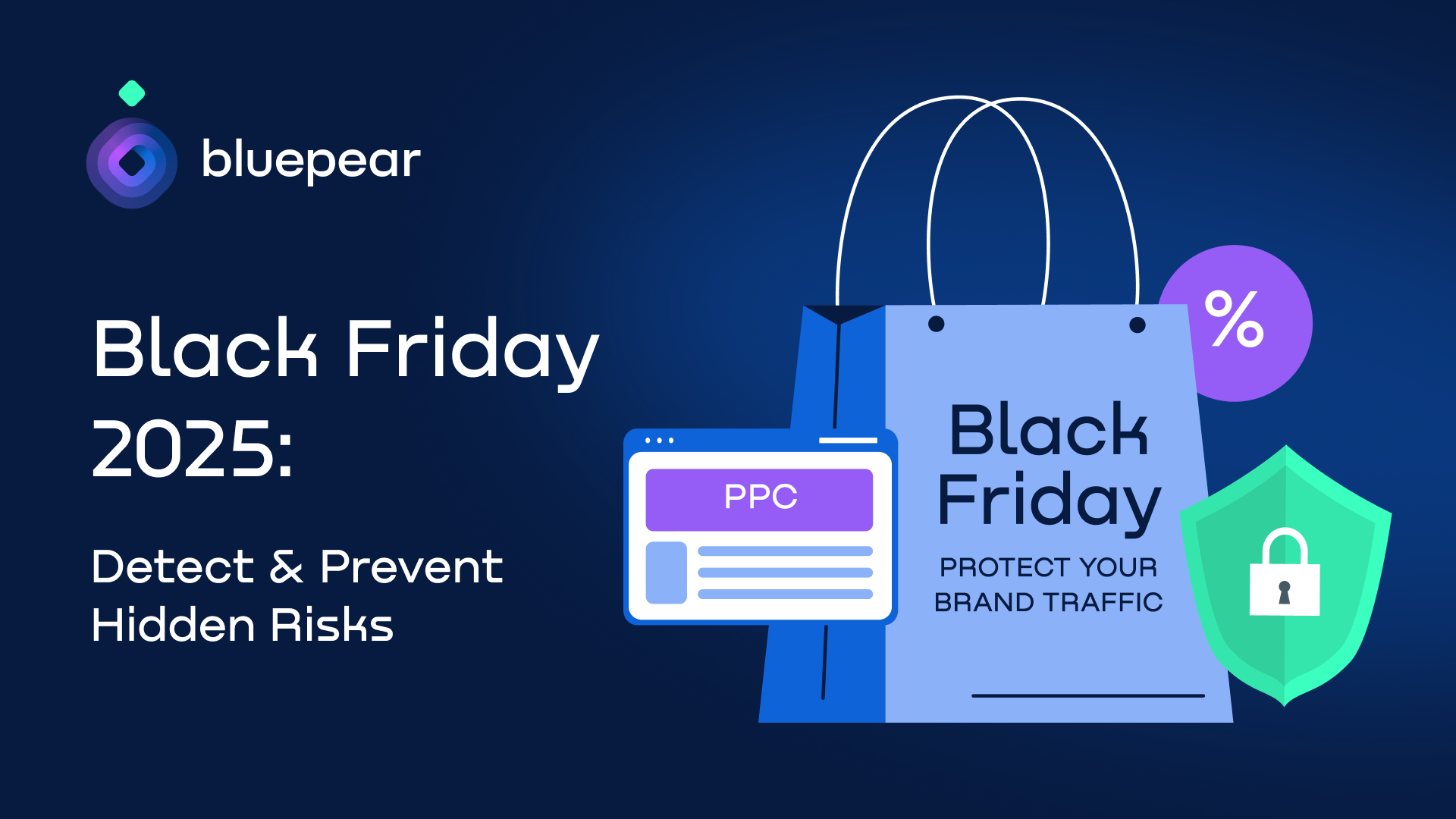

Black Friday is when performance peaks — and so do risks. In 2024, global spending reached $74.4 billion, with U.S. online sales up 10.2% year-over-year. Behind that growth, affiliate competition and coupon activity surged, pushing paid channels to their limits.
During these high-traffic days, even a single unchecked campaign can waste hundreds of thousands of dollars. Coupon fraud, coupon scam tactics and unauthorized brand bidding mess with your paid traffic, distort performance data and steal conversions that should’ve stayed yours.
That’s why strong PPC compliance and continuous promo code monitoring aren’t optional — they’re what keep acquisition costs stable and brand visibility intact when every click counts.
In this article, we’ll break down how coupon fraud and brand bidding undermine paid traffic — and how real-time compliance tools help brands stay protected when competition hits its peak.
How Black Friday turns discounts into a vulnerability
As online shopping volumes skyrocket, so does the scale of coupon fraud and promo code abuse. A 2024 Voucherify study found that 73% of retailers faced some form of promo code misuse last year — and most didn’t even realize it until losses started showing up in their reports.
A coupon scam can look simple: using the same promo code more than once, reusing promo codes meant only for new customers, or spreading fake promo codes from unreliable sources.
Behind these actions are real losses. Each misuse cuts into your margins and makes it harder to see what’s really driving sales — especially during peak sales like Black Friday, when every discount drives massive traffic.
And the impact of coupon scams is growing globally:
- According to Statista, online fraud losses in the U.S. reached $44 billion in 2024, with a large share linked to coupon fraud and promo code abuse.
- The Guardian reported how Black Friday turned into Black Fraud Day. In the U.K., over 16,000 online fraud cases were reported between November 2023 and January 2024, often tied to coupon scams, with each victim losing an average of £695.
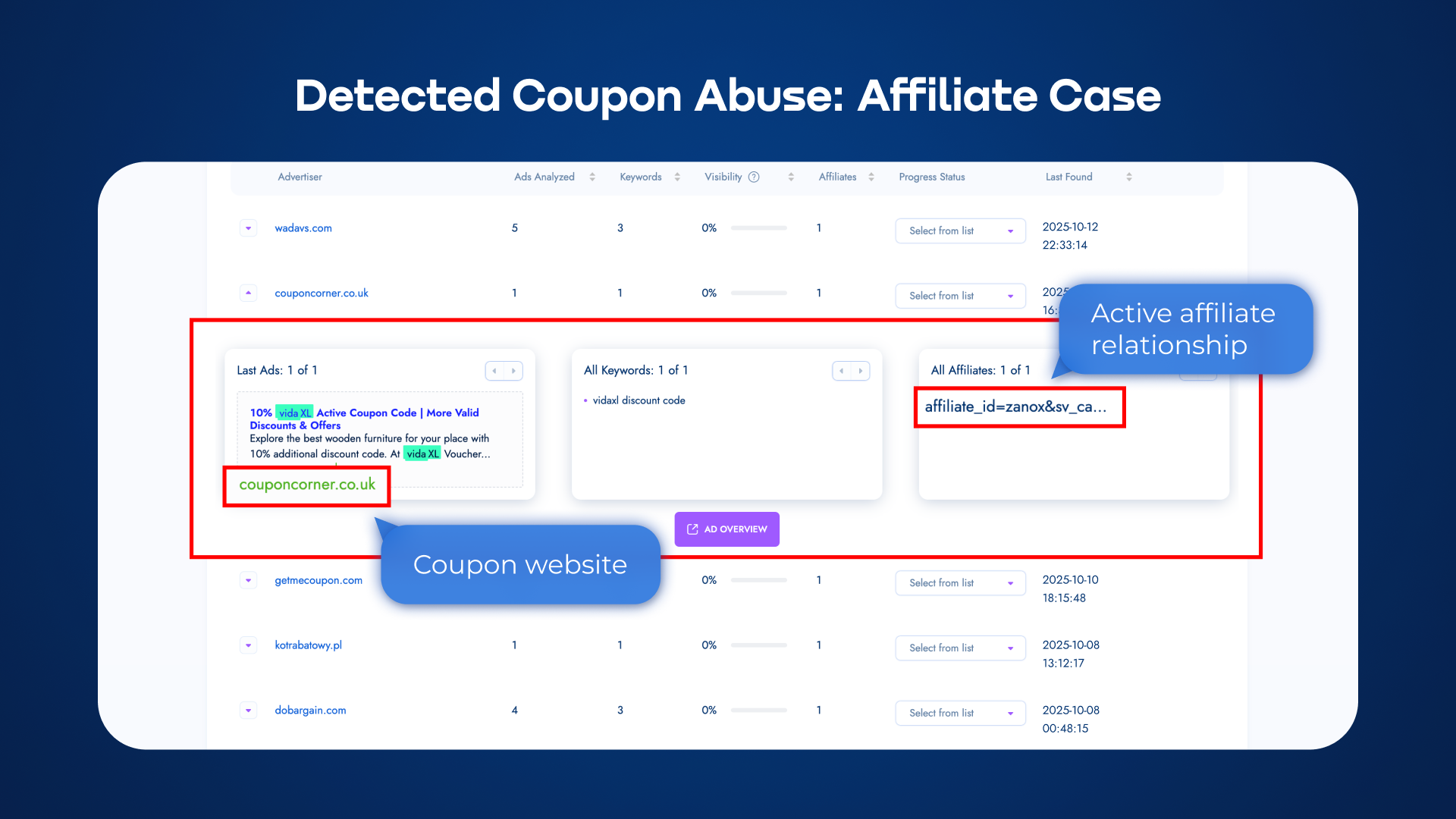
So the real question is — how can you stay in control and protect your brand from coupon abuse when thousands of affiliates are running at full speed?
- Verify where your promo codes appear
Regularly audit coupon sites and affiliate channels to ensure promo codes aren’t being reused, leaked or published without permission. It’s the first step in stopping fake or stolen codes before they go viral. - Set smart redemption limits
Restrict the number of times a promo code can be used from the same account, device or IP. This helps prevent repeated redemptions and keeps discounts where they belong — with real customers. - Use technology to detect fraud in real time
Machine learning and behavioral analytics can identify suspicious promo code activity and block coupon fraud automatically, before it impacts your budget.
With competition and traffic peaking during events like Black Friday, promo code monitoring is essential to prevent coupon fraud, protect profit margins, and keep your brand reputation intact.
Brand bidding: When affiliates steal your brand traffic
During the Black Friday 2025 rush, competition for ready-to-convert users reaches new heights. Affiliates and competitors often launch campaigns that break PPC compliance rules — bidding on brand keywords, using the brand name as a search query or even mimicking the official ads (that’s ad hijacking). As a result, a customer searching for “Brand + Black Friday deal” might land on an affiliate page instead of yours — and you end up paying for your own traffic twice.
This practice — known as brand bidding — hits the budget from several angles. When multiple affiliates compete for the same branded query, CPC can jump by 15-25% during Black Friday peaks. What’s worse, brands often end up rewarding the very affiliates who intercept their paid traffic — covering both the ad click and a commission on the same conversion.
Beyond wasted ad spend, brand bidding also throws your analytics off. When affiliates start eating into your organic and direct traffic, your numbers stop adding up — conversion rates drop, CTR looks worse and ROI loses accuracy. On paper, the campaign seems underperforming, but in reality, part of the budget is just being rerouted to look-alike domains. During Black Friday, all that extra coupon traffic makes it harder to spot the difference — higher CPCs and “better” conversions look normal, but they’re often signs of affiliate fraud.
You can usually spot brand bidding issues by looking at small inconsistencies that add up fast.
If your branded campaigns suddenly show more clicks but fewer conversions, if new domains start appearing with your logo or “official” discounts, or if certain affiliates’ commissions spike for no clear reason — that’s a red flag.
Without ongoing PPC compliance and promo code monitoring, these patterns blend into the Black Friday noise until they turn into real losses.
Black Friday compliance playbook
Black Friday is a stress test for affiliate programs. Hundreds of partners, promo codes and campaigns run at once — and even well-defined rules can break under pressure. This quick compliance playbook outlines how to stay ahead of coupon fraud and brand bidding, keeping your PPC channels clean and compliant when the stakes are highest.
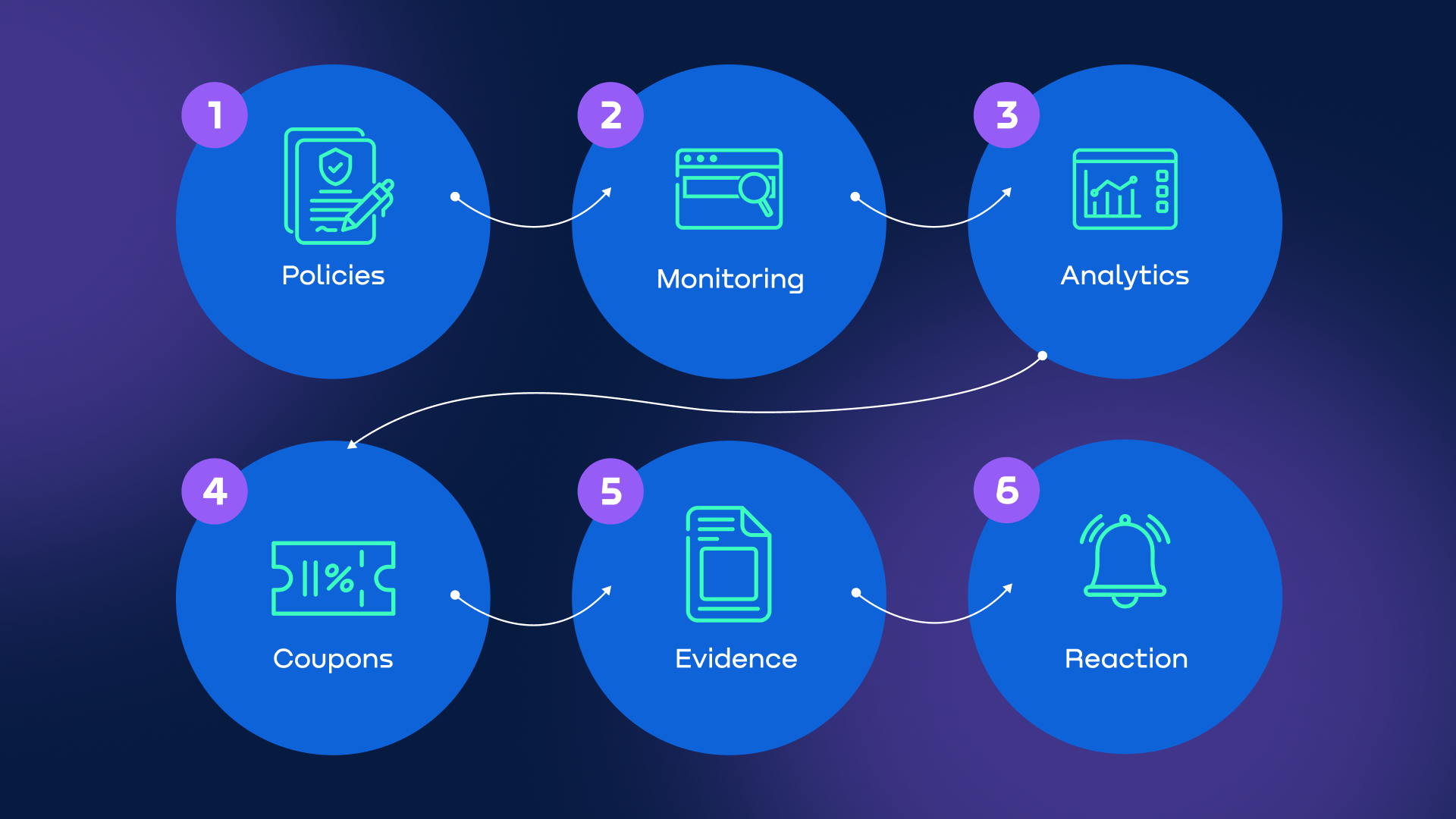
1. Policies
Define clear rules in your affiliate program: no brand bidding, no unauthorized coupons and full PPC compliance by keywords. Specify consequences upfront — void commissions, temporary suspensions or permanent bans for repeated violations. This sets expectations early and leaves no room for misinterpretation.
2. Brand monitoring
Regularly check search results for queries like “Brand + Black Friday,” “Brand + deal” or “Brand + coupon” — across multiple GEOs, on mobile, and during off-hours. That’s when hidden campaigns are most likely to run. Document everything you find: ads, domains, redirects.
3. Anomaly analytics
Track sudden spikes from specific partners — conversion rates jumping to 100%, drops in brand impression share, or peaks in coupon redemptions. Consistent promo code monitoring helps catch such irregularities before they impact performance.
4. Coupons
Use unique coupon codes for every traffic source, limit expiration dates, and audit coupon sites and browser extensions. If a code leaks — block it immediately. Quick action prevents further coupon fraud and loss of control over discount logic.
5. Evidence
Keep a full trail of proof: SERP screenshots, landing pages, redirect chains, and affiliate IDs. Solid documentation helps resolve PPC compliance disputes fast — with networks, partners or legal teams.
6. Reaction
Act fast once violations are confirmed: report the case, pause the affiliate, and cancel commissions for the affected period.
With hundreds of campaigns running simultaneously, manual control simply doesn’t scale. Bluepear automates this workflow — scanning search results, detecting anomalies, collecting evidence and sending real-time alerts. It helps teams stay compliant and protect paid channels, even in the chaos of Black Friday.
Minimum always-on scan profile
To catch hidden campaigns before they drain budgets, even a basic monitoring setup can go a long way. Here’s the minimum scan profile every brand should keep running — it covers the biggest risk zones without overloading your resources.
- GEO coverage
Focus on three to five key countries and two to three major cities. Prioritize markets that drive the most conversions or where affiliates are most active. - Devices
Run checks across desktop, mobile and tablet. Fraudulent campaigns often hide behind mobile-only placements, so skipping mobile is like missing half the picture. - Timing
Nighttime and weekends are when “quiet” ads usually go live — the ones you won’t see during office hours. Use local search interfaces to spot regional differences in results. - Evidence
Save everything: SERP screenshots, landing pages, redirect chains, affiliate IDs. Consistent documentation is your best proof when addressing PPC compliance or coupon fraud cases. - Frequency
Run scans every one to three hours. This interval is enough to catch short bursts of activity without overspending on checks — and ensures you see problems while they’re still small.
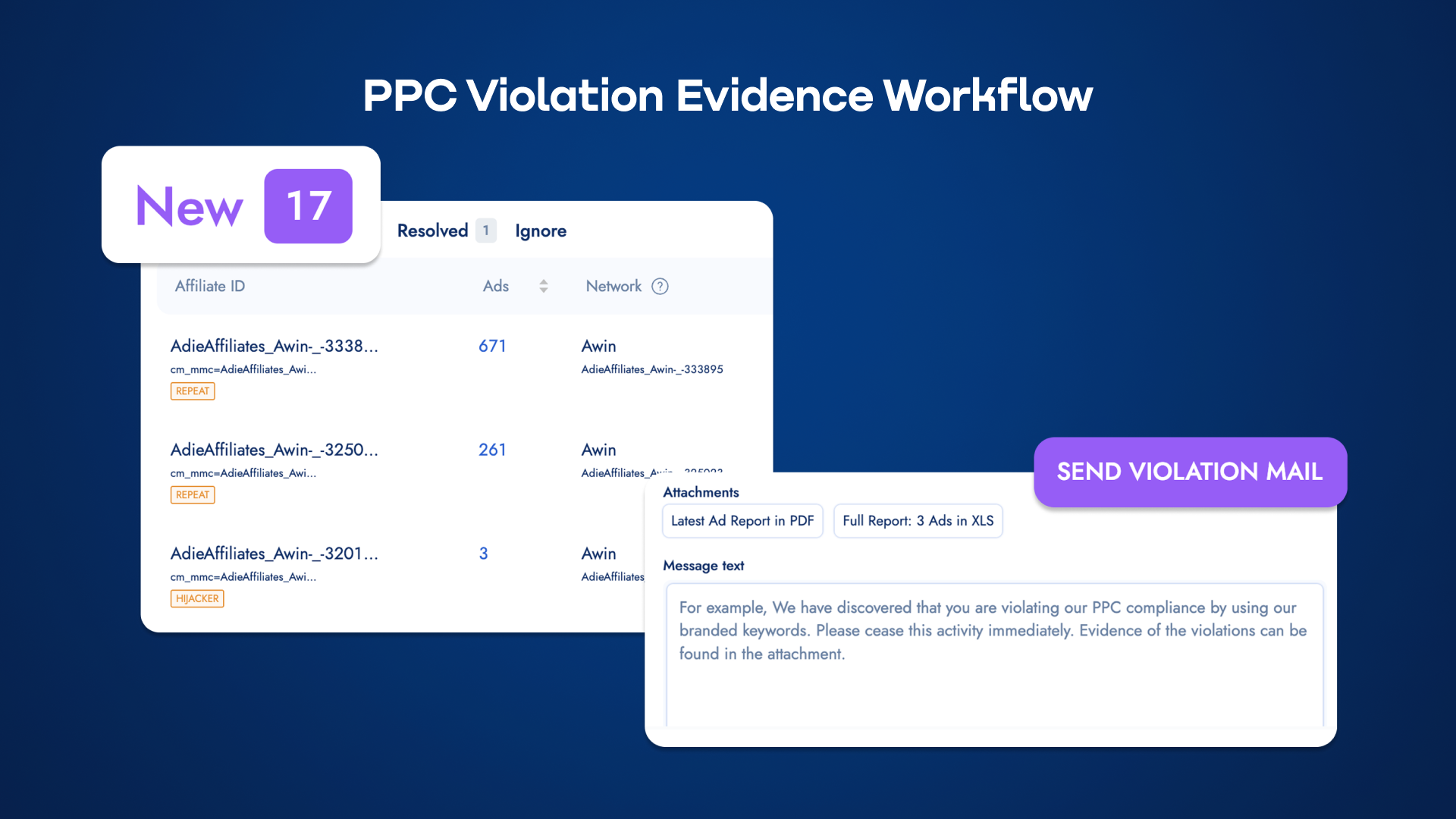
How to catch affiliate violations step by step
Affiliate violations appear and disappear within minutes — automation is the only way to keep up. Platforms like Bluepear simulate real user behavior: browsing from residential IPs, switching between GEOs, devices and languages. They see exactly what your customers see — including cloaked ads and coupon scam activity hidden from standard monitors.
Setup takes minutes.
You register your brand project, add key domains and landing pages, then include branded keywords and seasonal variations like “Brand + Black Friday,, “Brand + deal” or “Brand + coupon.” Built-in keyword suggestions help you cover multiple GEOs, devices and languages.
Once the scan is live, Bluepear continuously runs automated checks across desktop, mobile and tablet — including nights and weekends when hidden campaigns are most active. The platform automatically captures screenshots, redirect paths, and affiliate IDs, creating a ready-to-use evidence trail for every detected violation.
Real-time alerts and dashboards clearly separate competitor and affiliate findings, with transparent case statuses (New, In Progress, Resolved). Compliance teams can react before ad spend is lost — without manual tracking or overnight monitoring shifts.
If you want to see how your brand performs under real search conditions, Bluepear offers a 7-day free trial — just in time to prepare your promo code monitoring setup for the Black Friday rush.
Conclusion
Black Friday rewards speed — but punishes blind spots. When coupon fraud and brand bidding go unchecked, performance data becomes unreliable and budgets leak faster than teams can respond.
The brands that win aren’t just watching dashboards — they automate protection, verify every promo code, and act on evidence in real time. Building PPC compliance into daily operations before the rush means cleaner attribution, fairer payouts, and fewer surprises when competition peaks.
With automation running 24/7, your team stays focused on growth — not damage control.
If you want to explore how automation can strengthen your brand protection workflow ahead of Black Friday, you can test Bluepear’s monitoring setup for free for 7 days.



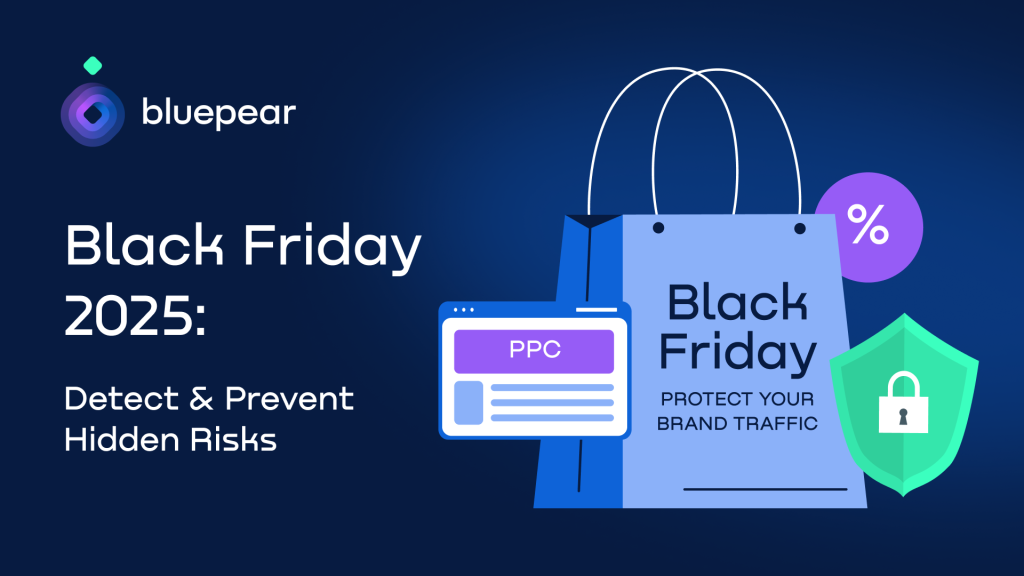




Recent Comments